A six-year investigation exposing America’s deadliest prison system.


In 2019, we began investigating unexplained and unreported deaths in Alabama's state prison system.
We soon learned about Steven Davis—a 35-year old man who was killed
at Donaldson Correctional Facility.
Steven’s mother was committed to seeking the truth about what happened to her son.
The Alabama Solution documents the investigation that followed, raising troubling questions about corruption and a possible cover-up.
But Steven was only one of more than 1300 people who died in state custody since we began our research.
And during that time, the rate of deaths in ADOC more than doubled.
While some deaths remain under investigation, we have so far confirmed that more than 470 people died from preventable causes—including suicide, drugs, violence, officer brutality, and other avoidable circumstances.
But, uncovering why so many people are dying proved incredibly difficult.
The Alabama Department of Corrections (ADOC) releases limited details on deaths, and their response to requests for information is often incomplete and sometimes incorrect.
This secrecy denies families accountability, while keeping the public in the dark about what’s happening inside taxpayer-funded institutions.
This secrecy denies families accountability, while keeping the public in the dark about what’s happening inside taxpayer-funded institutions.
The truth is, people are dying in Alabama’s prisons from complex and horrifying circumstances, but if we rely only on the prison’s statistical reports, causes of death are reduced to one word, like “accident” or “undetermined.”
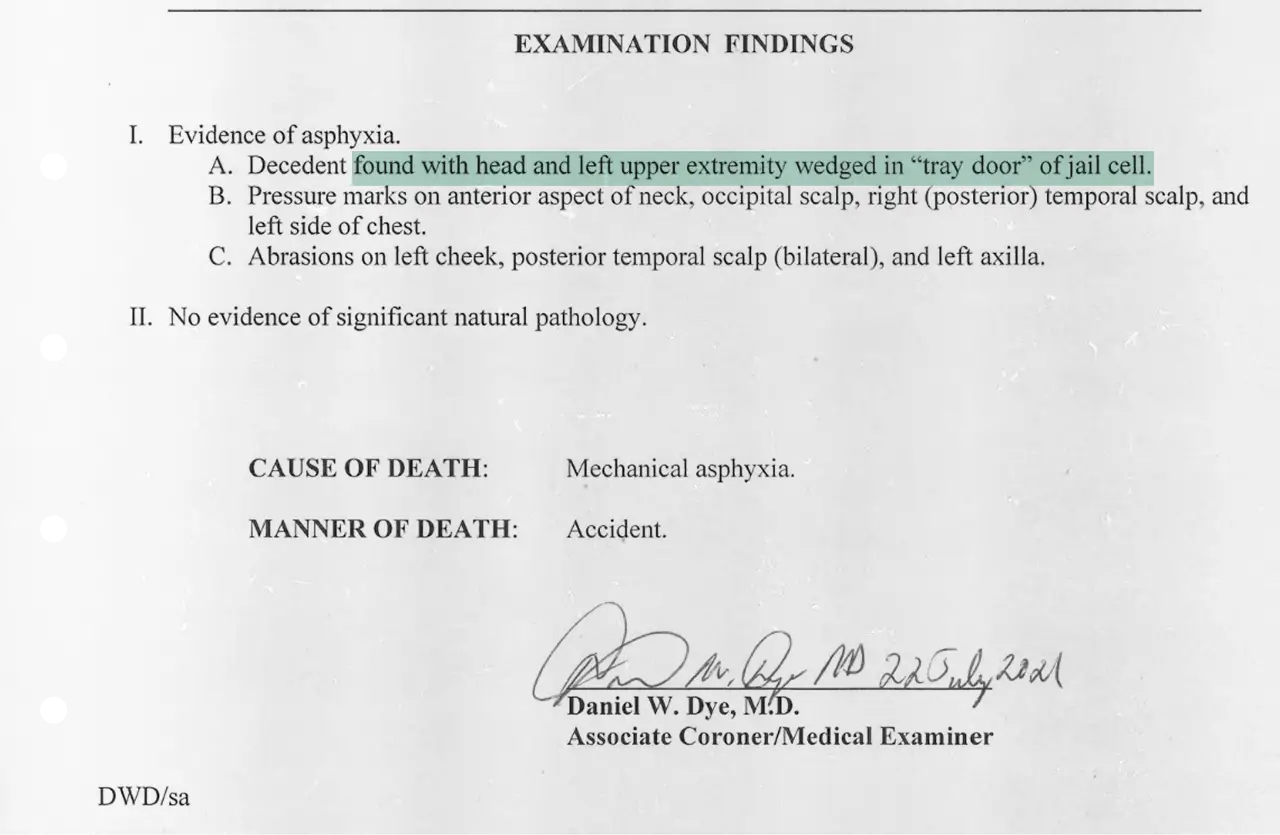
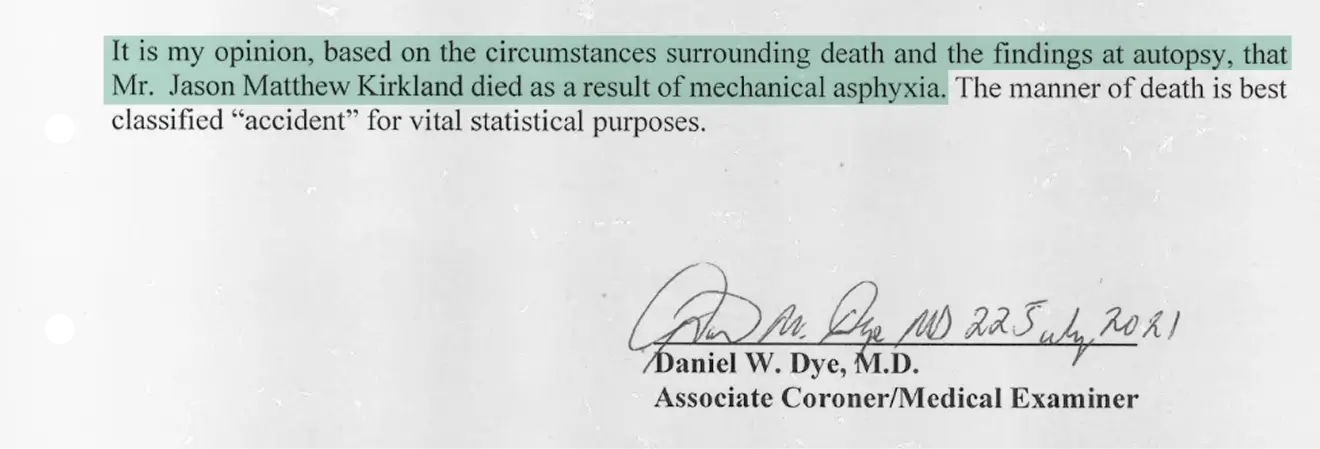
Source: Jason Kirkland's autopsy
Jason Kirkland
1993–2021
Jason Kirkland’s death is categorized as an accident in Alabama Department of Corrections records.
Further investigation revealed he suffocated to death when his head and arm became wedged in the tray slot on his cell door.

Source: Jason Kirkland's autopsy
His family never learned anything about how it happened, but suspected that Jason was trying to get the attention of officers when he became trapped.

Source: Jason Kirkland's autopsy
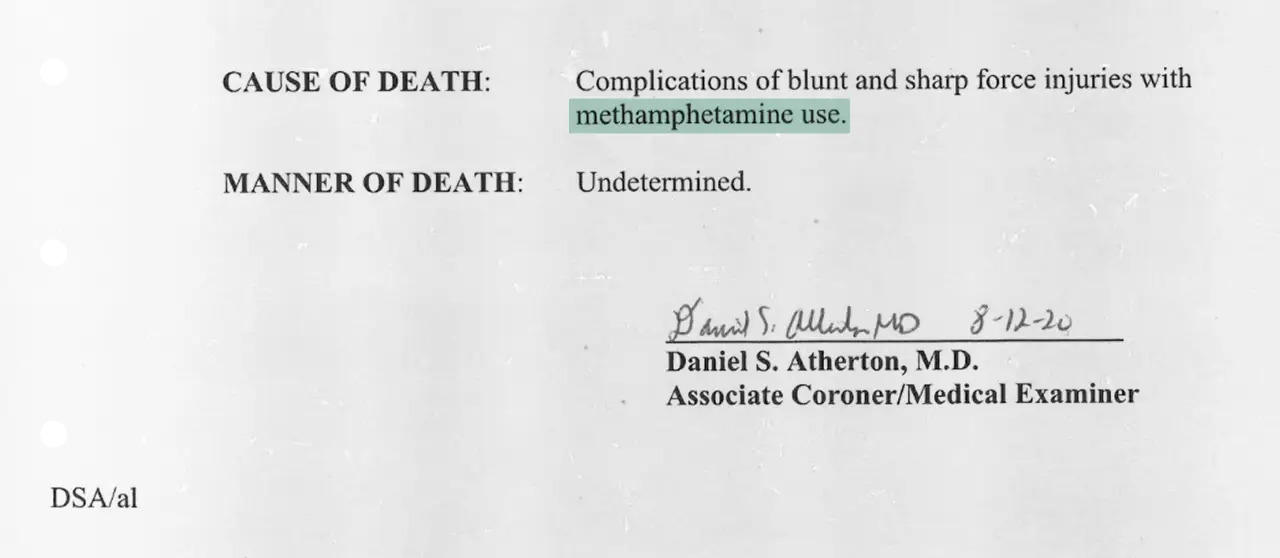

Source: Darnell McMillan’s autopsy
Darnell McMillian
1982–2020
Darnell McMillan’s death was classified as “undetermined”.
But we learned Darnell died after officers put him in a solitary confinement cell with another man. Both were on suicide watch, and Darnell had meth in his system.

Source: Darnell McMillan’s autopsy
A fight between the two men broke out, and officers sprayed them with a chemical agent. Darnell began gasping for breath and died a short time later.

Source: Darnell McMillan’s autopsy
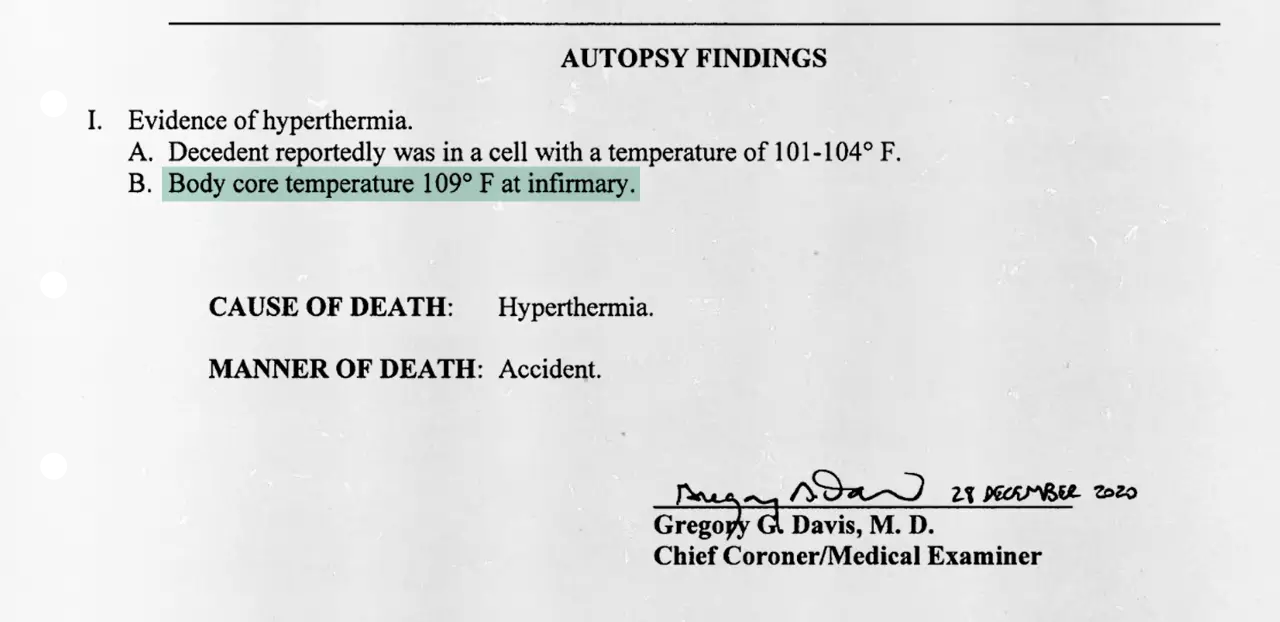

Source: Tommy Rutledge’s autopsy
Tommy Rutledge
1976–2020
The state of Alabama called Tommy Rutledge’s death an accident.
We obtained his autopsy report which showed Tommy was literally baked to death in an overheated cell. He died of hyperthermia, his face pressed to the window as he tried to breathe in cool air.

Source: Tommy Rutledge’s autopsy
This happened during the winter, and the prison’s heating system pumped excessive hot air into his cell, bringing his body temperature to 109 degrees.

Source: Tommy Rutledge’s autopsy
These three deaths are just a few among hundreds that stem from state failures—each one a reminder of why every death demands a thorough investigation, followed by full public disclosure.
Jason kirkland
1993–2021, died at Donaldson Correctional Facility.
Darnell McMillian
1982–2020, died at Donaldson Correctional Facility.
Tommy Rutledge
1976–2020, died at Donaldson Correctional Facility.
Therefore, we filed dozens of public record requests over six years, pulling information from multiple sources of state and federal data, autopsy reports, along with eyewitness accounts from inside the prisons.
Read more about our methodologyThe result—a searchable database of over 1300 people who died in Alabama prisons and how they died.

Taken together, the data shows:
Drug related deaths increased ten-fold over five years, becoming the leading driver of the soaring mortality rate in ADOC.
Homicides are now seven times higher than
a decade ago.
a decade ago.
The suicide rate more than doubled in five years.
And officer brutality remains a deadly, unchecked reality in the system.
The U.S. Constitution requires prisons to protect incarcerated people from harm.
However, in Alabama any sentence can become
a death sentence.







